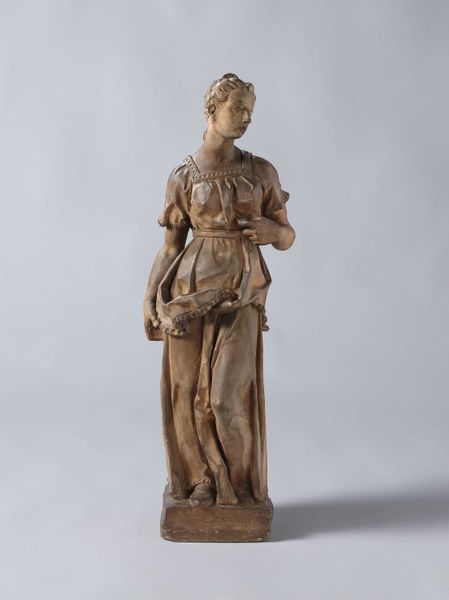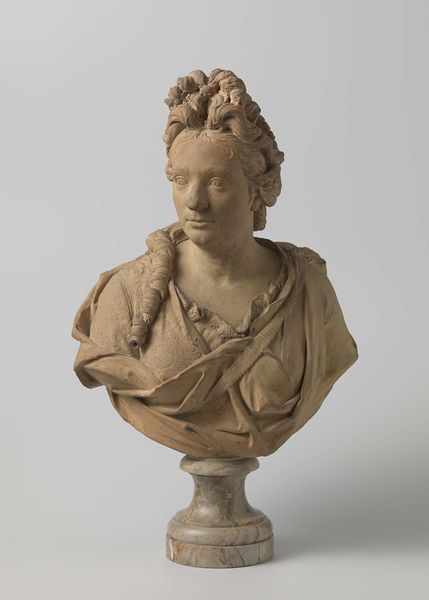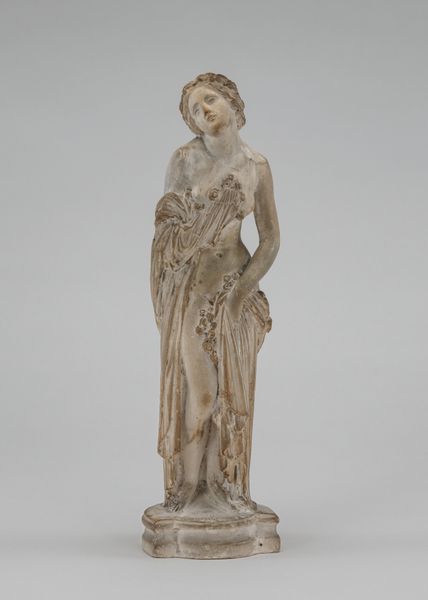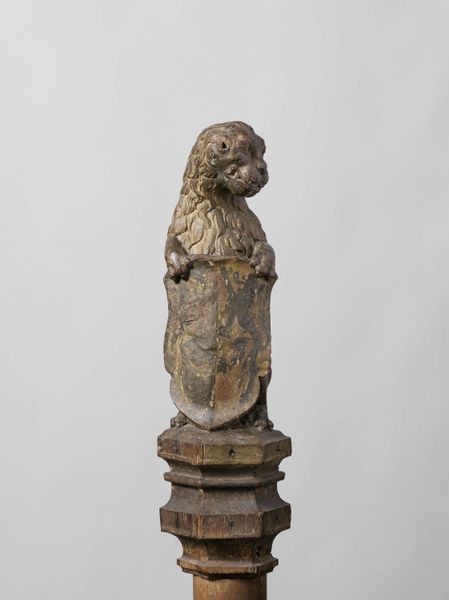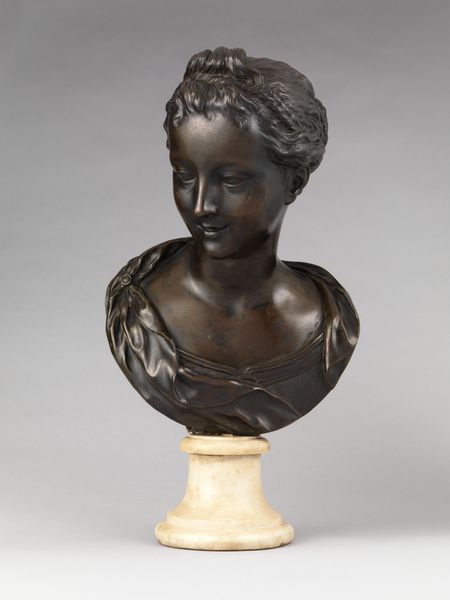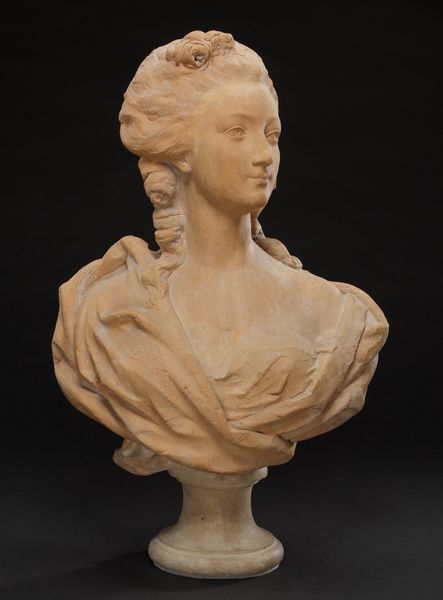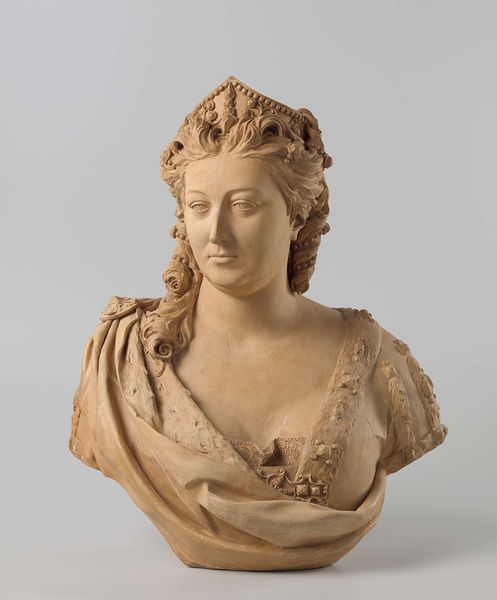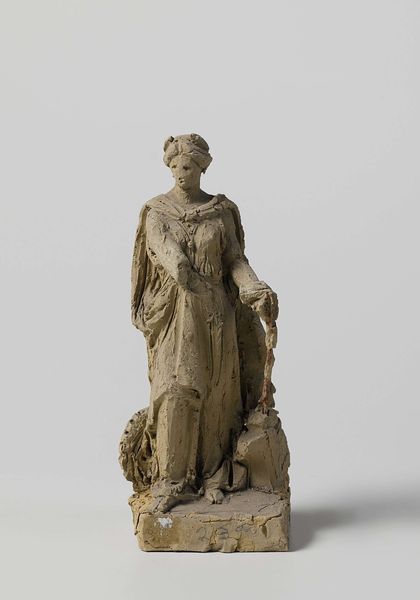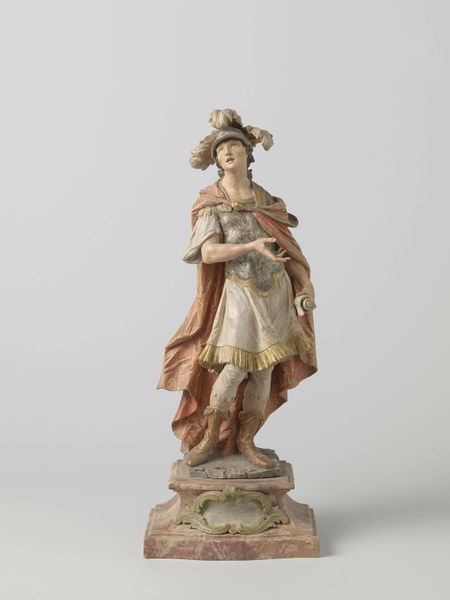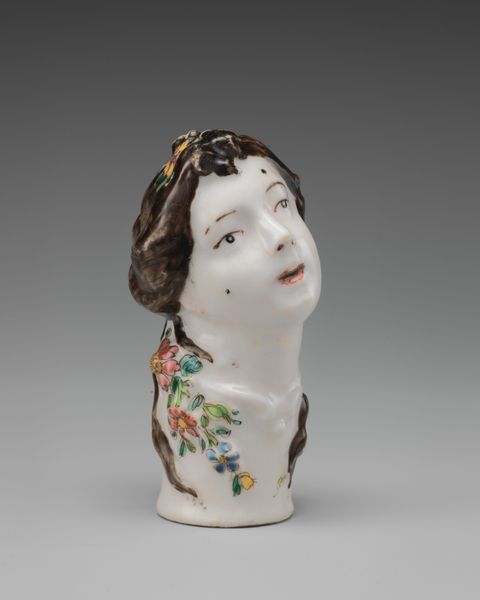
sculpture, wood
#
portrait
#
sculpture
#
sculpture
#
wood
#
early-renaissance
Dimensions: height 41.5 cm, width 39 cm, depth 19 cm, weight 10.4 kg
Copyright: Rijks Museum: Open Domain
Curator: This captivating wood sculpture, titled "Borstbeeld van een jonge vrouw"—"Bust of a Young Woman"—is believed to have been crafted somewhere between 1400 and 1500, perhaps by Jacopo della Quercia or his circle. Its understated presentation lends a somber air. Editor: It does seem restrained, almost melancholic. I'm struck by how the artist balances delicate realism in the facial features with a somewhat stylized treatment of the drapery. It's a compelling duality. Curator: Note the positioning of the head. It's slightly tilted down and to the side. This immediately signals a demure affectation. The gaze avoids direct contact. Editor: Exactly, and consider the veil or head covering. This was frequently employed during the Early Renaissance. The veil immediately locates the figure within a system of social conventions. Curator: Structurally, the sculpture has a clear, pyramidal composition, with a solid base supporting the delicate features of the face. The smoothness of the face provides a satisfying contrast to the deeply carved, almost turbulent rendering of the hair. Editor: And how the original pigment, faded as it is, speaks volumes! Remnants of red and blue hint at an elevated status. These were precious colors with symbolic meanings connected to virtue and nobility, or perhaps devotional associations. Curator: Certainly, there is an almost architectural quality in the way the sculptor has modeled the drapery, creating folds and planes that resemble classical columns. The artist demonstrates considerable skill in imbuing the solid wood with such subtle emotion. Editor: Absolutely. We observe how color amplifies not just the status but her cultural importance. It’s hard to say who this particular young woman represents—a noble woman, a saint. Curator: What’s remarkable is the synthesis. Formal qualities, such as balance and proportion, are not mere aesthetic choices but rather work to express the ideals of Early Renaissance. Editor: By considering the symbology of the colors used, as well as their significance in social status and the woman’s gaze, we're offered entry to a nuanced perspective into Early Renaissance ideas of representation and piety.
Comments
No comments
Be the first to comment and join the conversation on the ultimate creative platform.


